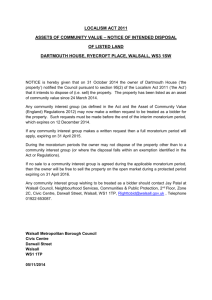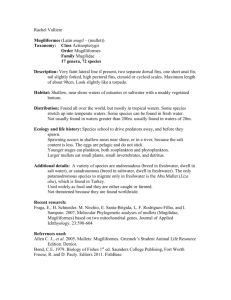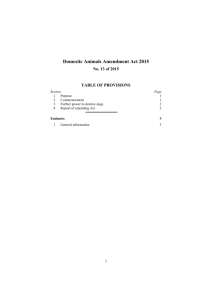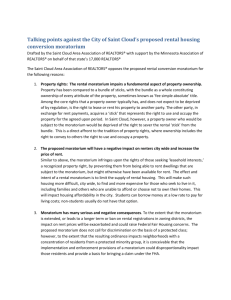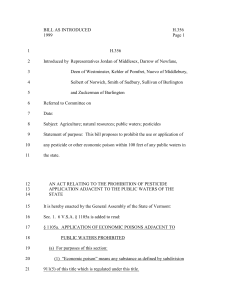National Commission on the BP Deepwater Horizon Oil Spill and
advertisement
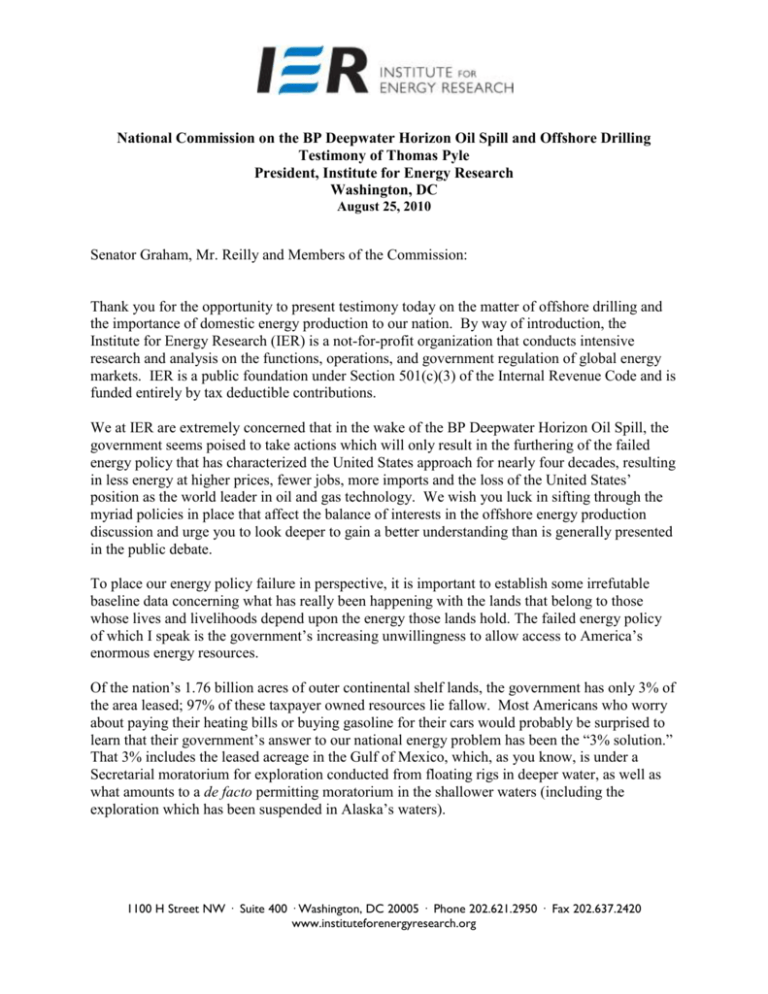
National Commission on the BP Deepwater Horizon Oil Spill and Offshore Drilling Testimony of Thomas Pyle President, Institute for Energy Research Washington, DC August 25, 2010 Senator Graham, Mr. Reilly and Members of the Commission: Thank you for the opportunity to present testimony today on the matter of offshore drilling and the importance of domestic energy production to our nation. By way of introduction, the Institute for Energy Research (IER) is a not-for-profit organization that conducts intensive research and analysis on the functions, operations, and government regulation of global energy markets. IER is a public foundation under Section 501(c)(3) of the Internal Revenue Code and is funded entirely by tax deductible contributions. We at IER are extremely concerned that in the wake of the BP Deepwater Horizon Oil Spill, the government seems poised to take actions which will only result in the furthering of the failed energy policy that has characterized the United States approach for nearly four decades, resulting in less energy at higher prices, fewer jobs, more imports and the loss of the United States’ position as the world leader in oil and gas technology. We wish you luck in sifting through the myriad policies in place that affect the balance of interests in the offshore energy production discussion and urge you to look deeper to gain a better understanding than is generally presented in the public debate. To place our energy policy failure in perspective, it is important to establish some irrefutable baseline data concerning what has really been happening with the lands that belong to those whose lives and livelihoods depend upon the energy those lands hold. The failed energy policy of which I speak is the government’s increasing unwillingness to allow access to America’s enormous energy resources. Of the nation’s 1.76 billion acres of outer continental shelf lands, the government has only 3% of the area leased; 97% of these taxpayer owned resources lie fallow. Most Americans who worry about paying their heating bills or buying gasoline for their cars would probably be surprised to learn that their government’s answer to our national energy problem has been the “3% solution.” That 3% includes the leased acreage in the Gulf of Mexico, which, as you know, is under a Secretarial moratorium for exploration conducted from floating rigs in deeper water, as well as what amounts to a de facto permitting moratorium in the shallower waters (including the exploration which has been suspended in Alaska’s waters). 1100 H Street NW · Suite 400 · Washington, DC 20005 · Phone 202.621.2950 · Fax 202.637.2420 www.instituteforenergyresearch.org This is directly contrary to some of the rhetoric that surrounds government leasing decisions, especially by Interior Secretary Salazar. For example, in January of 2010, the New York Times reported that the Secretary said: The previous administration’s ‘anywhere, anyhow’ policy on oil and gas development ran afoul of communities, carved up the landscape and fueled costly conflicts that created uncertainty for investors and industry,” said Mr. Salazar, a former senator from Colorado. We need a fresh look — from inside the federal government and from outside — at how we can better manage Americans’ energy resources. We at IER were surprised that the Secretary would contend that leasing took place “anywhere, anyhow” on the public lands under the previous Administration, as the Bush Administration leased significantly less lands and waters for energy than the Clinton Administration before it. As you can see by the attached table from the Congressional Research Service (original appended to testimony), since the implementation of the Outer Continental Shelf Lands Leasing Act of 1978, the offer to lease lands for energy both offshore and onshore has fallen dramatically through successive Administrations. This has coincided with a steep drop in energy production and a corresponding steep increase in oil imports. Table 1. Federal Land Offered for Lease by Administration 1969-2008 Administration Nixon/Ford (1969-1976) Carter (1977-1980) 1 Reagan (1981-1988) Bush (1989-1992) 2 Clinton (1993-2000) Bush (2001-2008) Offshore Acreage 18,645,676 10,959,513 652,490,269 259,554,410 420,277,357 403,953,986 Onshore Acreage n/a (see note below) n/a n/a 36,651,813 46,427,365 3 31,488,455 Total Acreage n/a n/a n/a 296,206,223 466,704,722 435,442,441 At IER, we believe that if the Secretary of Interior – the manager of our nation’s 2.4 billion acre federal energy mineral estate – is so uninformed about his own Department’s record that he would conclude that leasing was increasing when it was actually decreasing, his involvement in decision making about energy leasing requires serious review. That is why we welcome the opportunity your service on the Commission affords you to set the record straight, particularly as it pertains to the fundamentals and history of leasing policies in the United States. We also believe that the public has been misled into believing that the United States does not hold sufficient energy resources to supply our needs. For example, the New York Times reported that President Obama said “We consume more than 20 percent of the world’s oil, but have less 1 OCSLA was passed under President Carter, implementation began under President Reagan President George HW Bush served a 4 year term 3 Onshore leasing acreage offered under President Bill Clinton was fully 50% more than under President George W. Bush 2 than 2 percent of the world’s oil reserves” despite a report by the Congressional Research Service in 2009 that found the US has eight times as much recoverable oil as the 2 percent counted by the president—even without the inclusion of the largest-in-the-world oil shale deposits in the United States (relevant graph appended). The report concluded that the United States’ actual fossil fuel endowment rivals that of any nation in the world, but for the government policies that preclude the production and use of this resource. OCS Moratorium IER believes that the moratorium imposed by Secretary Salazar was ill-considered, counterproductive and should be immediately repealed. From the beginning, when the engineers and experts empowered to review offshore drilling by the Secretary publicly disagreed with the last minute inclusion of a moratorium in their report, it was apparent that the “heat of the political moment” seemed to outweigh all the expert advice concerning the ban on exploration in the Gulf (which was extended to Alaska). This was confirmed by Federal Judge Martin Feldman, who in his decision immediately prohibiting the government from enforcing the moratorium, said, “The blanket moratorium, with no parameters, seems to assume that because one rig failed and although no one yet fully knows why, all companies and rigs drilling new wells over 500 feet also universally present an imminent danger.” It is becoming clear that despite the judge’s ruling and the upholding of that decision by the Appeals Court, Secretary Salazar continues to pursue a political, rather than properly legal, approach to the matter of the moratorium. His imposition of a separate but equally damaging moratorium to skirt federal law continues to reverberate throughout the region, denying working men and women the jobs they so desperately want and need at a time of record national joblessness. The disclosure in the Wall Street Journal that the Secretary chose a moratorium over other options recommended to him by his Department in full knowledge that it could cost 23,000 jobs only adds to the body of evidence that suggests that stopping energy exploration offshore became Secretary Salazar’s Raison d’être in the wake of the understandable public concern during the spill. However, even the Department seems to have understated the potential impacts the moratorium has had on the people and businesses of the region who supply almost 1/3 of our domestic production of oil. According to the Louisiana Mid-Continent Oil and Gas Association, almost 80% of the oil produced in the Gulf comes from wells in the deeper waters. They estimate that the costs of the exploration suspension range from between $8.25 million and $16.5 million per day in rig costs, $1 million per day in costs for support boats and $165 to $330 million per month in lost wages for all 33 deepwater rigs. We at IER believe the Secretary has a higher duty than politics, including ensuring that his actions do worsen the lives of those residents of the Gulf region already facing difficult times as a result of the oil spill. As has been reported, Louisiana Governor Bobby Jindal and others have stipulated that the ongoing economic devastation of the spill may be surpassed by the impacts of the moratorium and the slowed permitting for activities relating to offshore development in the Gulf. The Secretary also has a responsibility to foster our national energy security. To date, his performance in that venue has been seriously deficient. While we do not know, it is easy to surmise that the foundation of his deficiency in this area stems in part from his gross misunderstanding of the state of our nation’s leasing and energy production history, as previously discussed. We would hope that the Commission would review not only the moratorium on activities in the Gulf and Alaska, but also the history of permitting that has taken place in the shallower waters since the spill. In addition to those rigs idled because of the moratorium and all the appurtenant jobs directly and indirectly affected, those who operate in the shallower waters have also been severely impacted because the pace of drilling permits has been significantly slowed. As of August 18, 30% of the jackup rigs in the shallow waters have been idled and the operators have estimated that if no new permits are offered by the end of September, 63% of the rigs will be idled. This de facto moratorium is especially worrisome because the record of drilling in the shallower waters of the Gulf of Mexico is extraordinary. For example, since 1949, 46,011 wells have been drilled in waters less than 1,000 feet in depth; during the last 15 years, 1,070 wells have been drilled. Clearly, the experts, engineers and men and women of the Gulf know, how to drill wells in shallow waters with little or no impact to the marine environment. In fact, in the last 15 years, a mere 15 barrels of oil have spilled in those areas. Given that record, there is no apparent reason for the slowdown in the processing of permits in the shallow waters. We are very concerned that this de facto moratorium raises the likelihood that even if the moratorium for the deeper waters was lifted, the Department of Interior and other agencies could effectively stop activity in those waters, as well. The blueprint has already been tested for this evasive tactic in the shallower waters. In closing, we hope the Commission will look deeply into the US record of leasing and energy production, bearing in mind that energy is, quite literally, “the capacity to do work.” Our nation needs more work. It needs more affordable energy to do that work. Please do what is in your power to free Americans to produce the energy that we have in abundance, but that is not produced due to a failed national energy policy that seems focused on politics, not producing energy. Thank you. Attachments: Congressional Research Service: Federal Lands Offered for Lease Since 1969 by Administration Graph of CRS findings re US recoverable oil supplies



